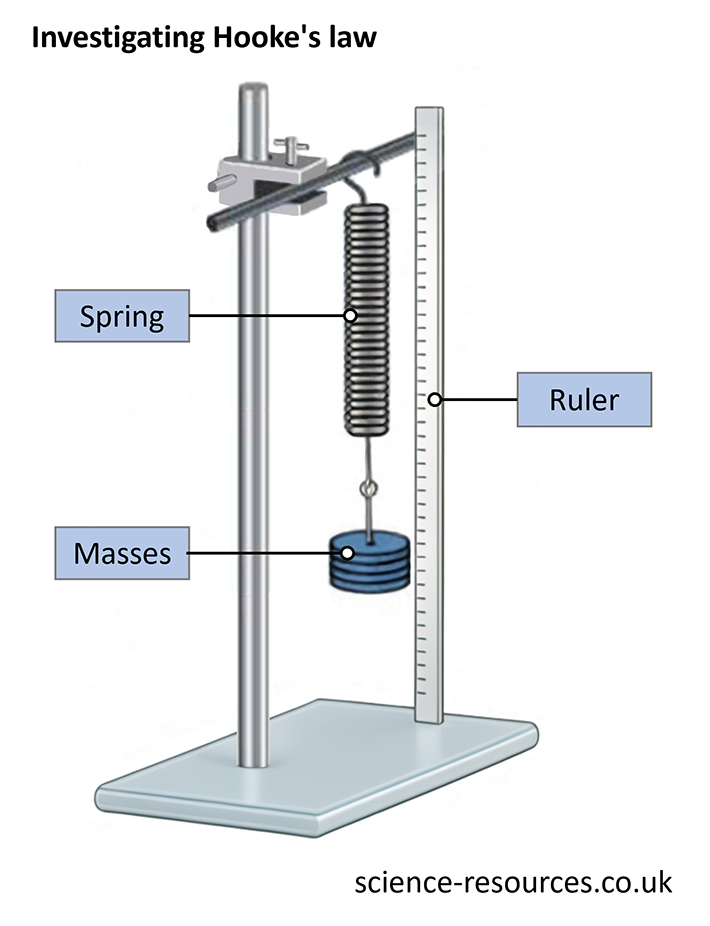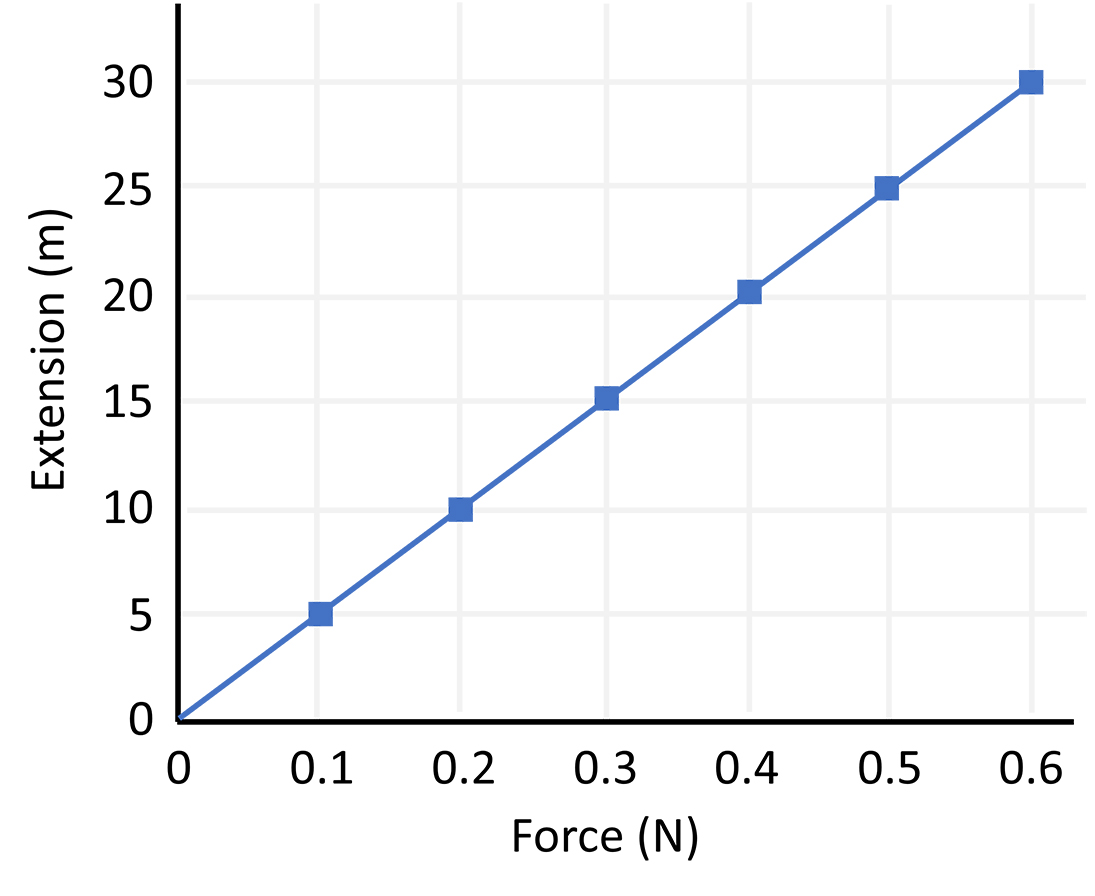Deformation and Hooke’s Law
Deformation The greater the force, the greater the amount of deformation. This is why a rubber band stretches out further the more you pull it. However, not all materials behave in the same way. Inelastic materials will change shape permanently and may even break. Hooke’s Law
When a force is applied to an elastic object, it can change shape. This is called deformation.
Applying a force to an object can cause it to either:
Hooke’s Law states that the extension of an elastic object is directly proportional to the force applied to it. For example, if the force on an object is twice as big, then the object will stretch or shrink twice as much. Also, if there is no force on the object, then it will not change its length.
Investigating Hooke's law Method 2. Attach an empty mass holder to the bottom of the spring and measure the length of the spring with a ruler. 3. Add more slotted masses, each time measuring the spring length. Extension = (Length of spring before adding mass) – (Length of spring after adding mass) When you have all your measurements, you can plot the extensions on a force-extension graph, with force on the vertical (y) axis and extension on the horizontal (x) axis.
To test Hooke’s law, you can add masses to a spring and measure the length of the spring when the weight of the masses is increased.
1. Set up the apparatus as shown in the diagram below.
Measure the extension using the formula:
When the dependent variable is directly proportional to the independent variable, the graph will have a straight line that goes through the origin (0,0). See example below:
Summary: